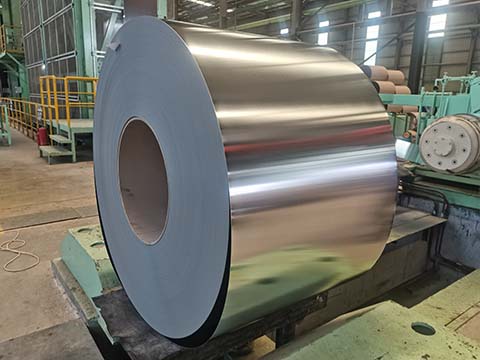Steps to Making High-Quality Cold Rolled Steel Coils
Contents |
[edit] Introduction
Cold rolled steel coils usually have a thickness ranging from 0.2 mm to 4 mm. They go through a complicated manufacturing process, involving heat treatment, cold rolling, and pickling.
[edit] Pickling
The hot rolled coils go through a pickling line consisting of hydrochloric acid solutions and scale breaker machines. These two systems remove any type of oxide film or surface scale on the rolls. Oxide films may cause surface flaws, thus reducing the overall quality of the rolls when they enter the cold rolling stage.
[edit] Cold rolling
Once the hydrochloric acid solutions and scale breaker machines remove the oxide films, the rolls go into the tandem mills one by one. The tandem mills are responsible for setting the thickness of the rolls. They can cut down the dimensions by up to 90%, depending on the requirement. Once the steel rolls pass through the tandem mills, there are no options to change their sizes.
[edit] Electrolyte cleaning
Cold rolled steel rolls contain a lot of contaminants and lubricant oil. Not cleaning them would lead to spots on the rolls. Electrolyte cleaning is essential to make sure that no roll contains even a speck of contaminant. Even a drop of oil may later look like a big spot.
[edit] Annealing or heat treatment
This is a crucial stage of producing high-quality cold rolled steel coils. In this stage, a two heat treatment method is used: continuous annealing and batch annealing. These two heat treatment methods are used simultaneously to provide high tensile strength to the rolls. The steel rolls also achieve better drawing qualities because of the multiple annealing methods.
[edit] Skin pass
The skin pass is a quality-check stage where the rolls go through a final rolling process. This rolling process can remove any sort of stretch marks or defects on the rolls. Once the rolls pass through this stage, you will see a smooth and lustrous surface. In addition to removing the stretch marks, the skin pass reduces the thickness of the coils by 1%.
Featured articles and news
Government consultations for the summer of 2025
A year of Labour, past and present consultations on the environment, the built environment, training and tax.
CMA competitiveness probe of major housing developers
100 million affordable housing contributions committed with further consultation published.
Homes England supports Greencore Homes
42 new build affordable sustainable homes in Oxfordshire.
Zero carbon social housing: unlocking brownfield potential
Seven ZEDpod strategies for brownfield housing success.
CIOB report; a blueprint for SDGs and the built environment
Pairing the Sustainable Development Goals with projects.
Types, tests, standards and fires relating to external cladding
Brief descriptions with an extensive list of fires for review.
Latest Build UK Building Safety Regime explainer published
Key elements in one short, now updated document.
UKGBC launch the UK Climate Resilience Roadmap
First guidance of its kind on direct climate impacts for the built environment and how it can adapt.
CLC Health, Safety and Wellbeing Strategy 2025
Launched by the Minister for Industry to look at fatalities on site, improving mental health and other issues.
One of the most impressive Victorian architects. Book review.
Common Assessment Standard now with building safety
New CAS update now includes mandatory building safety questions.
RTPI leader to become new CIOB Chief Executive Officer
Dr Victoria Hills MRTPI, FICE to take over after Caroline Gumble’s departure.
Social and affordable housing, a long term plan for delivery
The “Delivering a Decade of Renewal for Social and Affordable Housing” strategy sets out future path.
A change to adoptive architecture
Effects of global weather warming on architectural detailing, material choice and human interaction.
The proposed publicly owned and backed subsidiary of Homes England, to facilitate new homes.
How big is the problem and what can we do to mitigate the effects?
Overheating guidance and tools for building designers
A number of cool guides to help with the heat.
The UK's Modern Industrial Strategy: A 10 year plan
Previous consultation criticism, current key elements and general support with some persisting reservations.
Building Safety Regulator reforms
New roles, new staff and a new fast track service pave the way for a single construction regulator.

























